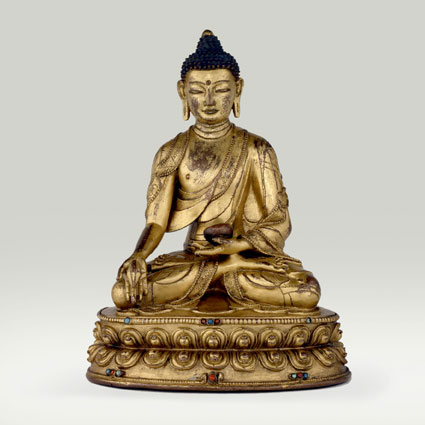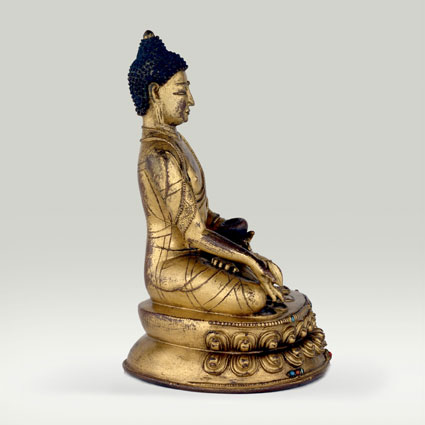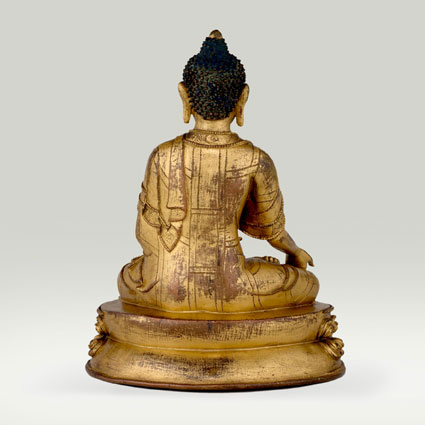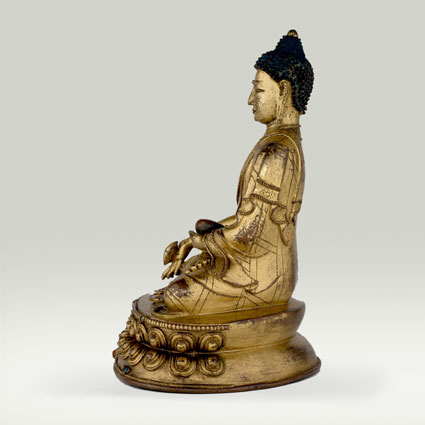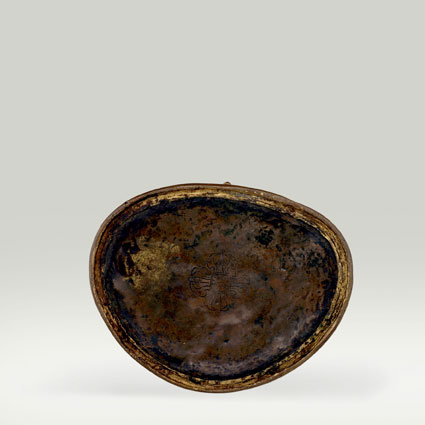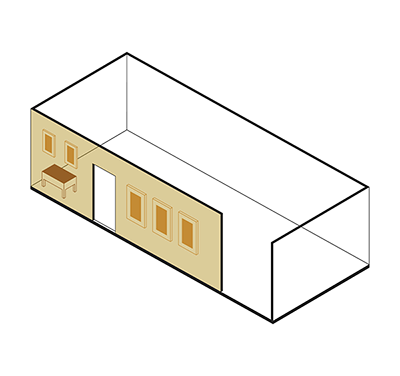ABS 183
Code: ABS 183
Country: Tibet
Style:
Date: 1550 - 1650
Dimensions in cm WxHxD: 13.6 x 17.3 x 10.8
Materials: Gilt copper
The lotus pedestal is inset on the front with coral and turquoise.
The face retains traces of painted gold and the hair is painted with a blue pigment.
The bottom of the pedestal is sealed with a copper plate decorated with the visvavajra emblem.
Bhaisajyaguru (Tib. sMan bla), one of the medecine Buddhas, is seated in the diamond attitude (vajraparyanka) on a double pedestal with beaded borders. He holds in the right hand extended in the gesture of charity (varada-mudra) a myrobalan fruit and holds with the left hand resting in his lap an alms bowl (patra). The upper monastic garment (uttarasanga) is patchwork quilt rendered with folds and covers both shoulders. The borders of the garment are decorated with beaded strings.
(Formerly von Schroeder Coll. 2005-16)
Bhaisajyaguru more formally Bhaisajyaguruvaiduryaprabha and also known as the Master of Healing or Medicine Buddha, is the Buddha of healing. His full name means "Medicine Master Lapis Lazuli Light". In Mahayana Buddhism, Bhaisajyaguru represents the healing aspect of the historical Buddha Shakyamuni. The use of the analogy of a Buddha being depicted as a doctor who cures the illness of suffering using the medicine of his teachings appears widely in Buddhist scriptures.
Origin
Bhaisajyaguru is described in the eponymous Bhaisajyaguru-sutra as bodhisattva who made and fulfilled 12 vows, two of them related to healing. On achieving Buddhahood, he became the Buddha of the realm of Vaiduryanirbhasa in the eastern quarter, where he is attended to by the bodhisattvas Nikko and Gakko. Yakushi is notably absent from the Mandala of the Two Realms, but is one of the Thirteen Buddhas.
Iconography
Bhaisajyaguru is typically depicted seated, wearing the three robes of a Buddhist monk, with a lapis-colored jar of medicine nectar in his left hand and the right hand resting on his right knee, holding the stem of the aurara plant between thumb and first finger. Image of Medicine Buddha
Role in Japanese Buddhism
Starting in the 7th century Yakushi has been the object of a popular cult in Japan, largely supplanting the previous cult of Ashuku (Akshobhya). Some of Yakushi's role has been taken over by Jizo (Ksitigarbha), but Yakushi still presides over the Japanese Buddhist memorial service to dead.
Role in Tibetan Buddhism
The practice of Medicine Buddha, the Supreme Healer (or Sangye Menla in Tibetan) is not only a very powerful method for healing and increasing healing powers both for oneself and others, but also for overcoming the inner sickness of attachment, hatred, and ignorance, thus to meditate on the Medicine Buddha can help decrease physical and mental illness and suffering.
Tibetan Buddhists consider the Medicine Buddha Empowerment to be the most powerful blessing for healing, dispelling sickness and for awakening the innate healing wisdom that lies within every individual.
Role in Chinese Buddhism
The practice of veneration of the Medicine Buddha is also popular in China, as he is depicted as one of the trinities of Buddhas, the others being the founder Gautama Buddha and Amitabha of the Pure Land sect. Like Tibetan Buddhists, Chinese Buddhists recite the mantra of the Medicine Buddha to overcome sickness. He is also closely associated with ceremonies for temple donors and for transferring of merit to such donors.
The Mantras
This is the long version of the Medicine Buddha Mantra in Sanskrit:
namo bhagavate bhaiṣajyaguru vaidūryaprabharajaya vathagataya arhate samyaksambuddhaya tadyatha: oṃbhaisajye bhaisajye bhaisajya-samudgate svaha
Another version of the long mantra is as follows:
om namo bhagavate bhaisajyaguru vaiduryaprabharajaya tathagataya arhate samyaksambuddhaya tadyatha: oṃbhaisajye bhaisajye mahabhaisajye bhaisajye raja samudgate svaha
When pronounced by Tibetan buddhists, it sounds like:
om nah moe bah-ga-va-tay bye-saya-guru vye-dur-yah proba-raja-yah, tata-gata-yah, arh-ha-tay, sam-yak-sam buddha-yah tay-ya-tah om bay-kah-jay bay-ka-jay mah-hah bay-kah-jay bay-ka-jay rah-jah sah-moo-gah-tay, so-hah
This is the short version of the Medicine Buddha Mantra, which is known as the Medicine Budddha Heart Mantra:
(tadyatha) oṃbhaisajye bhaisajye mahabhaisajye bhaisajye raja samudgate svaha
When pronounced by Tibetan buddhists, it sounds like:
(tah-yah-tah) oṃ, beck-and-zay beck-and-zay, mah-hah beck-and-zay beck-and-zay, rod-zah sah-moo-gah-tay, so-hah!
Medicine Buddha Resources
The Uses for the Medicine Buddha Mantras in Tibetan Buddhism:
The Medicine Buddha mantra is held to be extremely powerful for healing of physical illnesses and purification of negative karma. One form of practice based on the Medicine Buddha is done when one is stricken by disease. The patient is to recite the long Medicine Buddha mantra 108 times over a glass of water. The water is now believed to be blessed by the power of the mantra and the blessing of the Medicine Buddha himself, and the patient is to drink the water. The practice should be repeated each day until the illness is cured.
Tibetan Buddhism also teaches that the Medicine Buddha mantra can be used to liberate the animals one eats. The practice involves reciting the Medicine Buddha mantra and then blowing on the meat. It is held that the dead animal, wherever it has been reborn, will be liberated from its suffering and reborn into a happy existence.
Chandra, Lokesh, 1991. Buddhist Iconography of Tibet (CBIT). New Delhi: International Academy of Indian Culture & Aditya Prakashan. Nos. 121, 2339 (136)-2345 (142) - References to the iconography of Bhaisajyaguru
Klimburg-Salter, Deborah E. , 1993. "Bhaisajyaguru in Indian art?", SAA, part II. Stuttgart: Franz Steiner Verlag. Pp. 501-519, 3 pls - References to the iconography of Bhaisajyaguru.
Pal, Pratapaditya, 1999. "Possible Indian Representations of Bhaisajyaguru", journal of Bengal Art- Gouriswar Bhattacharya Volume, Vol.4. Journal of Bengal Art – Gouriswar Bhattacharya Volume. Pp. 153-58, 34 figs - References to the iconography of Bhaisajyaguru

